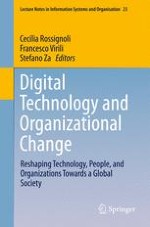This book includes a selection of the best research papers presented at the annual conference of the Italian chapter of the Association for Information Systems (AIS), which took place in Verona, Italy in October 2016. Tracing various aspects of the ongoing phenomenon of evolution towards a global society, and consequently the ever-innovating digital world, it first discusses emerging technologies and the new practices in the information-systems world. It then examines the new businesses and ongoing business transformations. Lastly, it considers the economic and societal changes brought about by access to and exploitation of socio-technical networks. The plurality of views offered makes the book particularly relevant for users, companies, scientists and governments.
